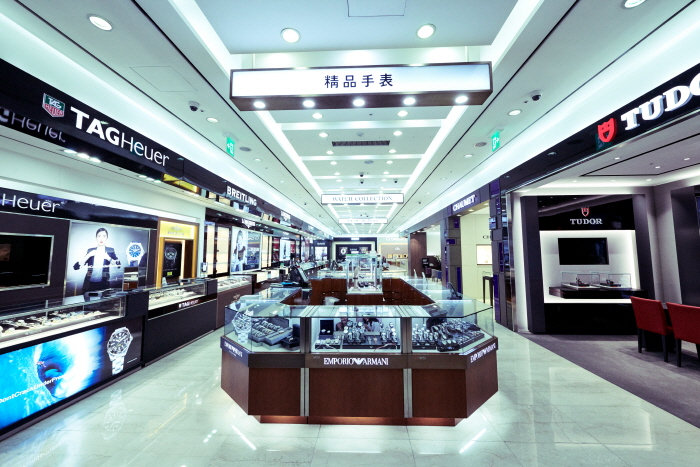Myeong-dong Myeong Pharmacy [Tax Refund Shop] (명동명약국)
1.5Km 2024-04-19
#102, 11, Namdaemun-ro 7-gil, Jung-gu, Seoul
-
Dongwha Duty Free Shop (동화면세점)
1.5Km 2021-06-04
149, Sejong-daero, Jongno-gu, Seoul
+82-2-399-3000
Dongwha Duty Free offers only the world’s best brands for sale. Visitors can shop for the latest popular brands in perfume, cosmetics, accessories, leather goods, and more. Apart from Korean brands and popular imported brands, visitors can also shop for specialty Korean products and folk crafts from all around the world.
On The Spot - Myeong-dong Branch [Tax Refund Shop] (온더스팟 명동점)
1.5Km 2024-04-18
37-4, Myeongdong 8-gil, Jung-gu, Seoul
-
GS25 - Junggu Toegye Branch [Tax Refund Shop] (GS25중구퇴계점)
1.5Km 2024-06-27
180, Toegye-ro, Jung-gu, Seoul
-
CU - Koreana Hotel Branch [Tax Refund Shop] (cu코리아나호텔점)
1.5Km 2024-06-26
135, Sejong-daero, Jung-gu, Seoul
-
Seowon (서원)
1.5Km 2024-03-11
141, Toegye-ro, Jung-gu, Seoul
+82-2-776-0214
Located in Myeongdong Street, Seowon focuses on porridge. It boasts a wide variety of porridge made with abalone, chicken, samgye (chicken and ginseng) mushrooms, oysters, shrimp, vegetables, etc. They also have Korean-style juices made with ginseng, fruits, and vegetables that goes well after finishing porridge. The restaurant opens early in the morning, so it's a great place to grab a quick breakfast.
Samcheong-dong Street (삼청동길)
1.5Km 2025-01-22
107 Samcheong-ro, Jongno-gu, Seoul
It is said that Samcheong-dong was named from the story about the three "cheong" (Chinese character meaning clean) of the area, namely the mountain, water, and people. Another theory is that the origin of the region's name came from Samcheongjeon Hall where three tablets called "Taecheong," "Sangcheong," and "Okcheong," were set up based on Taoism. Samcheong-dong Street features a mixture of old scenes of hanok buildings with traditional beauty and modern scenes of galleries and cafés, creating a unique atmosphere. Visitors can feel the abundant cultural mood at every corner of the street through the art galleries, museums, antique shops, and quiet pathways.
![Myeong-dong Myeong Pharmacy [Tax Refund Shop] (명동명약국)](http://tong.visitkorea.or.kr/cms/resource/87/2878587_image2_1.jpg)
![Ai Pharmacy [Tax Refund Shop] (아이약국)](http://tong.visitkorea.or.kr/cms/resource/98/3313898_image2_1.jpg)


![On The Spot - Myeong-dong Branch [Tax Refund Shop] (온더스팟 명동점)](http://tong.visitkorea.or.kr/cms/resource/42/2878642_image2_1.jpg)
 English
English
 한국어
한국어 日本語
日本語 中文(简体)
中文(简体) Deutsch
Deutsch Français
Français Español
Español Русский
Русский